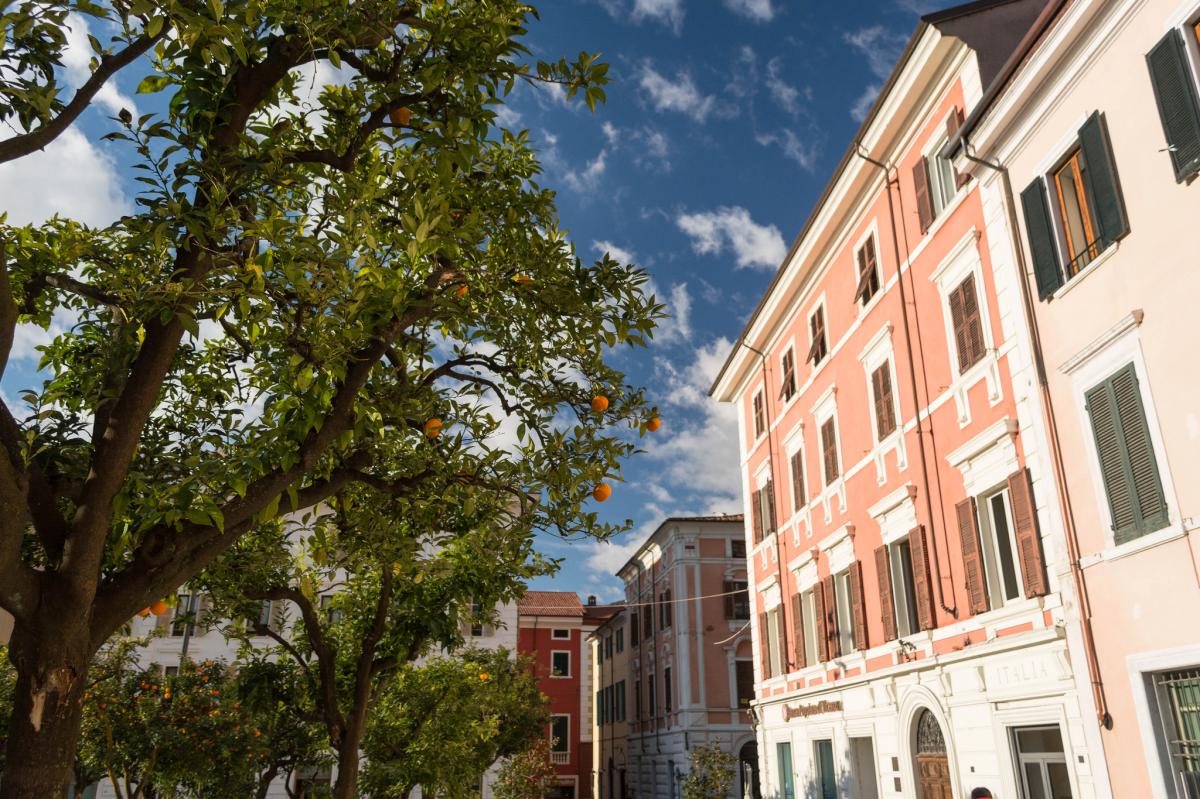




 7 May 2015
7 May 2015
 Caterina Pomini
Caterina Pomini
 6325
6325
In 1877, Giosuè Carducci wrote these lines to his friend Lidia as he was staying in Massa. His mother had gotten married in 1834 and certainly saw the first generation of these trees, which have adorned the three sides of Piazza Aranci – located in the very heart of the city - since 1819. On the fourth side of the Square is Palazzo Ducale, built around 1550, with its splendid flaming red façade; by taking Via Dante Alighieri, on the north side of the Square, you can easily reach the Cattedrale dei Santi Pietro e Francesco, better known as Duomo (1470).
A little bit of history
In the Early Middle Ages, Massa was a possession of the bishops of Luni and served as a rest stop for pilgrims travelling along the Via Francigena from Canterbury to Rome. Located in the far north of Tuscany, 46 km north west of Lucca, unlike other Tuscan centres, it was never subject to the authority of the House of Medici and the management of the city's policy and internal affairs was much more similar to Europe's. From the 15th to the 19th century, Massa was ruled by the Malaspina and Cybo-Malaspina families; the city has grown up around the imposing Malaspina Castle (15th century) which overlooks the city centre from the top of a hill. In 1741, Maria Teresa Cybo-Malaspina - Duchess of Massa - married Ercole III d'Este - Hereditary Prince of Modena and although she had arranged for the trade of marble to be regulated, had built a new hospital and had helped to set up the Academy of Fine Arts in Carrara, her relocation to Modena prevented her from continuing to take care of her city.
In the early years of the 19th century, the city was ruled by Elisa Bonaparte Baciocchi – Napoleon's younger sister and Princess of Lucca and Piombino – who ordered the demolition of the Parish Church of St. Peter in order to make space for the new Piazza Imperiale, or rather Piazza Aranci. The Congress of Vienna returned the city to Maria Beatrice d'Este, who came back with a solid master plan that included construction of roads, bridges, churches, a new aqueduct and a new hospital; nevertheless, in 1859, the citizens of Massa voted to join the Kingdom of Sardinia and the House of Este was expelled for good. The unification process in Massa was particularly complex due to the fact that most of the population opposed unification. Situated on what was then called the Gothic Line, the city was heavily damaged by Allied bombs during World War II and countless civilians were killed by the Nazis.
With Carrara, Massa specializes in the processing and export of marble. The coast is lively with lots of beach clubs, bars, discos and nightclubs... The Apuan Alps - famous for their ever white peaks - are a paradise for walkers, hikers and climbers.
Take a Tuscany tour and discover Massa and its surroundings with Florence car rent!
THIS SECTION
IS UNDER CONSTRUCTION